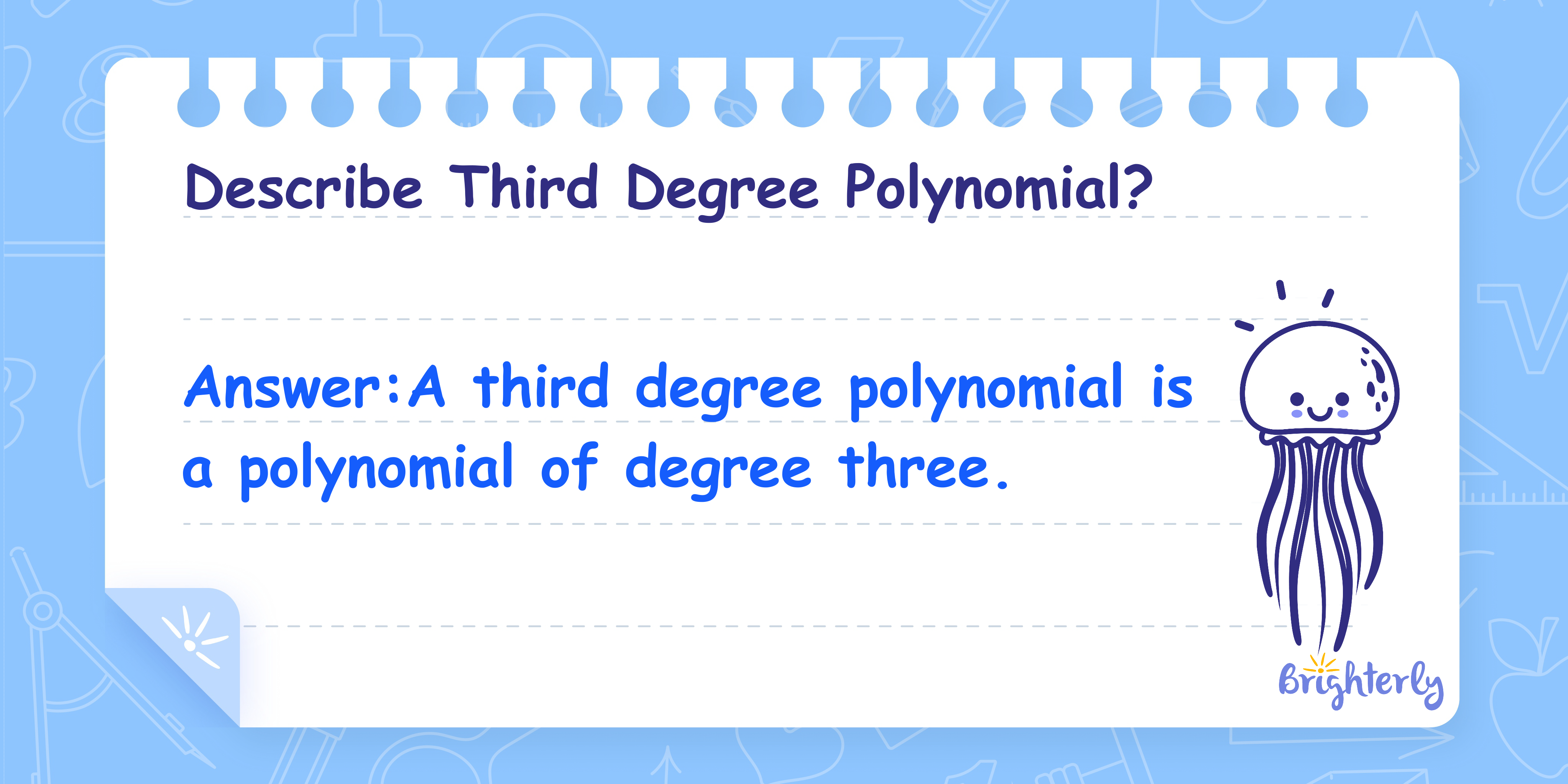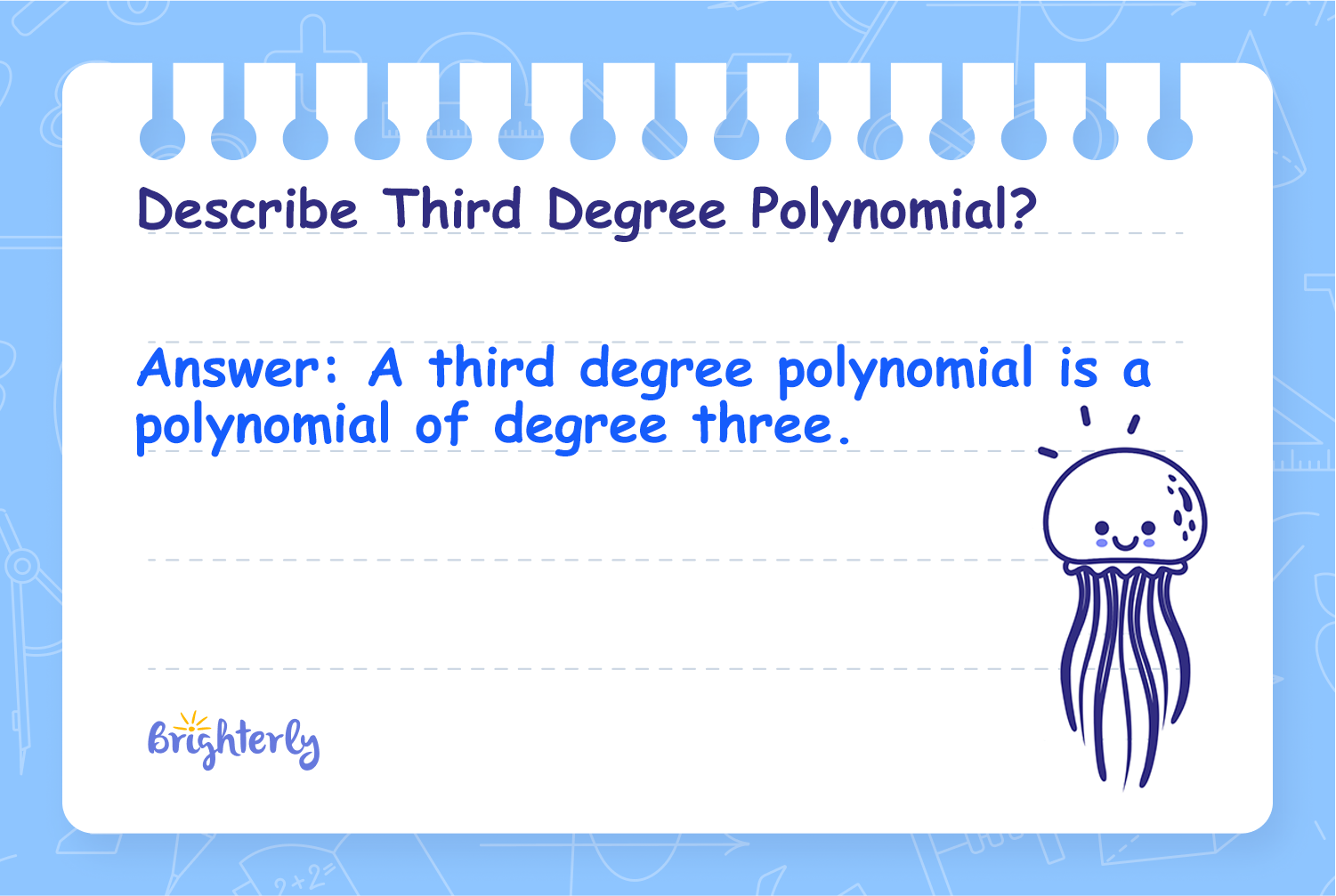
Reviewed by Marvi M. Andres
Describe Third Degree Polynomial
Answer: A third degree polynomial is a polynomial of degree three
A third degree polynomial, also known as a cubic polynomial, is a mathematical expression involving variables raised up to the third power. These types of polynomials are significant in algebra and calculus because they can model diverse real-world phenomena and have distinctive features such as inflection points and up to three real roots.
Methods
Math Tutor Explanation Using the General Form Method
This method explains the structure of a third degree polynomial by presenting its general form and describing the roles of its coefficients.
Step 1: Step 1: Write the general form: ax^3 + bx^2 + cx + d, where a ≠ 0
Step 2: Step 2: Recognize that 'a', 'b', 'c', and 'd' are constants and 'x' is the variable
Math Tutor Explanation Using Graphical Features
This approach highlights the key graphical characteristics and behaviors that distinguish third degree polynomials from other polynomials.
Step 1: Step 1: Understand that a cubic polynomial graph can have one or two turning points depending on its coefficients
Step 2: Step 2: Recognize that the graph can cross the x-axis up to three times, indicating up to three real roots
Step 1:
Step 2:
Math Tutor suggests: Deepen Your Understanding of Polynomials
Expand your knowledge of polynomials, exponents, and related algebraic concepts with these recommended exercises.
FAQ on Third Degree Polynomials
What is a third degree polynomial called?
A third degree polynomial is called a cubic polynomial.
How many roots can a cubic polynomial have?
A cubic polynomial can have up to three real roots.
What does 'degree' mean in a polynomial?
The degree is the highest power of the variable in the polynomial.
Can a third degree polynomial have only one turning point?
Yes, depending on its coefficients, it can have either one or two turning points.
What is the general form of a third degree polynomial?
The general form is ax^3 + bx^2 + cx + d, where a ≠ 0.


